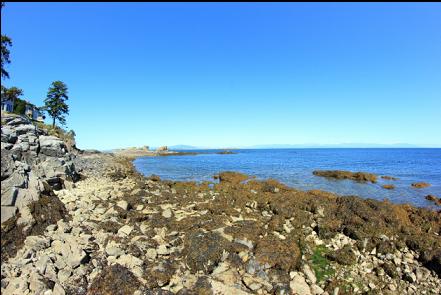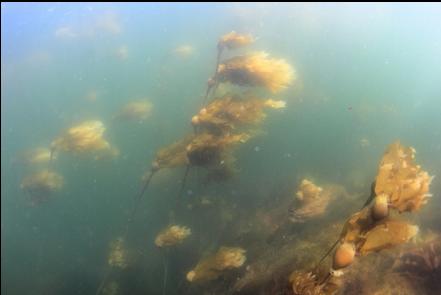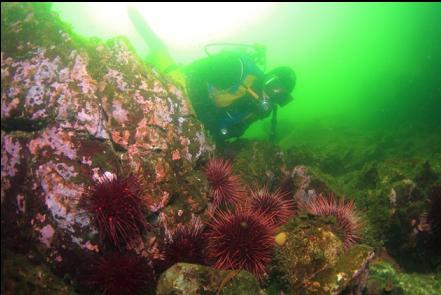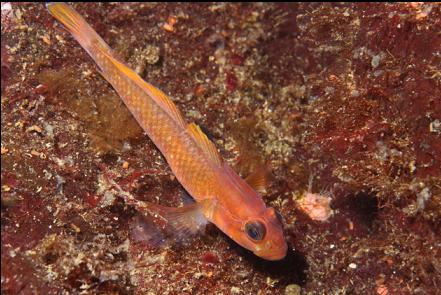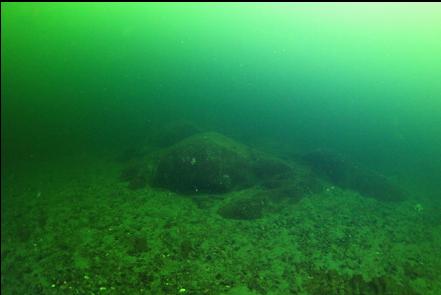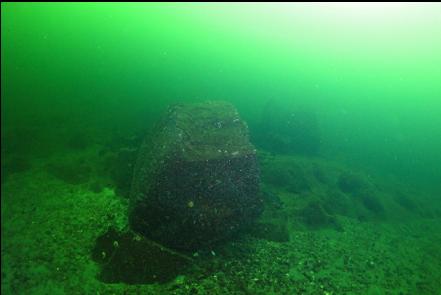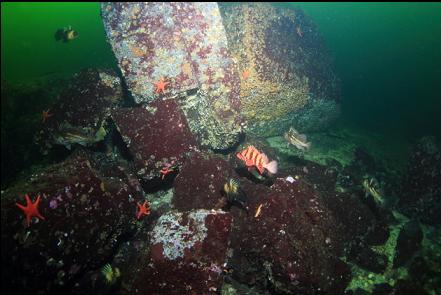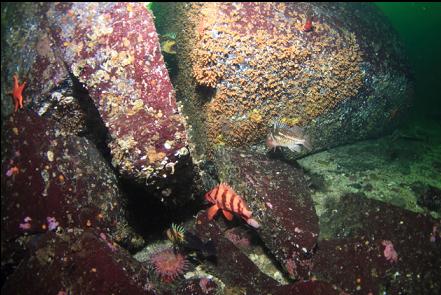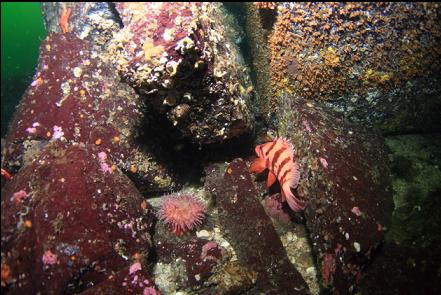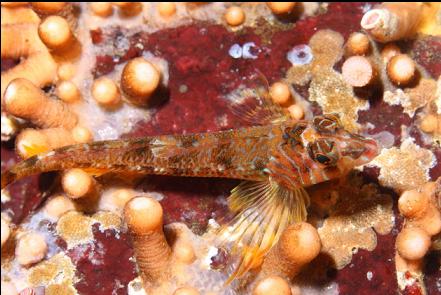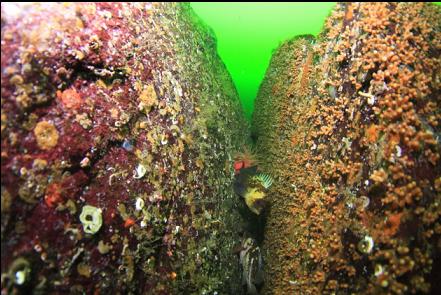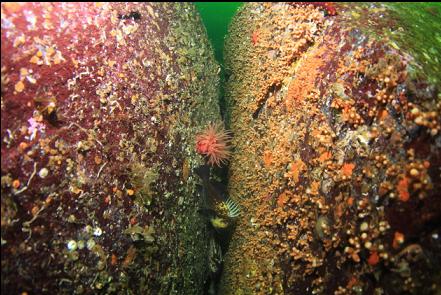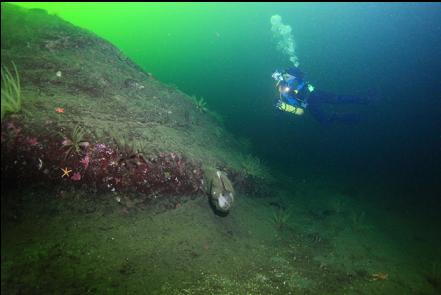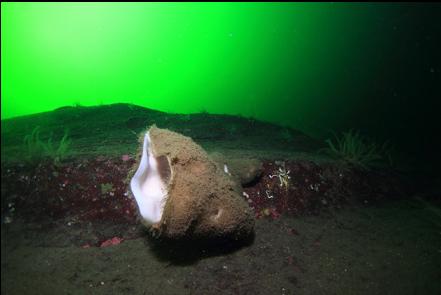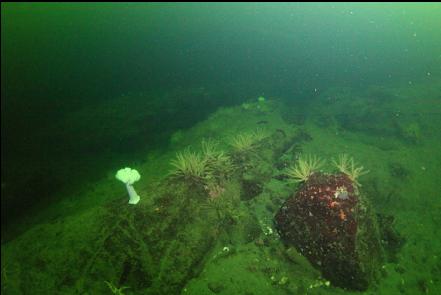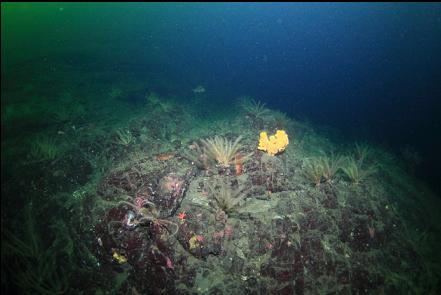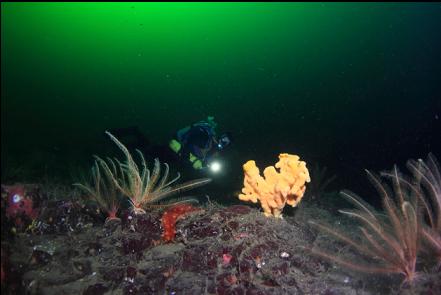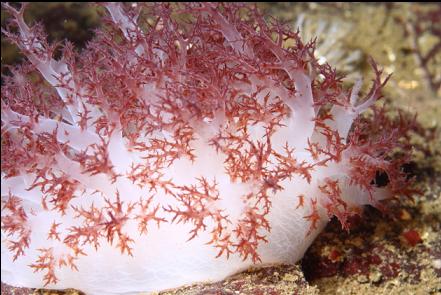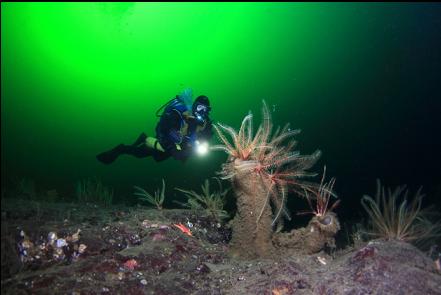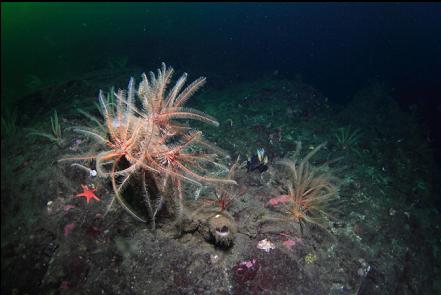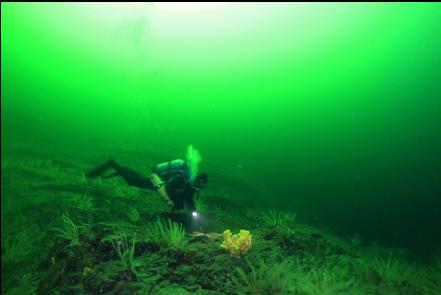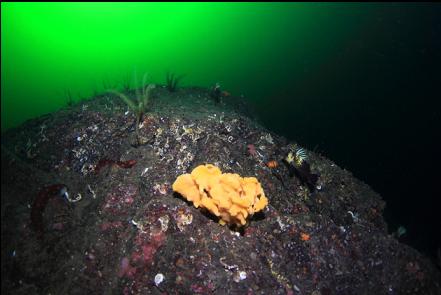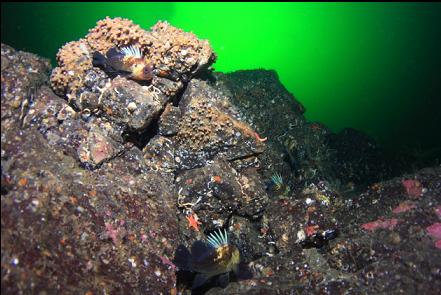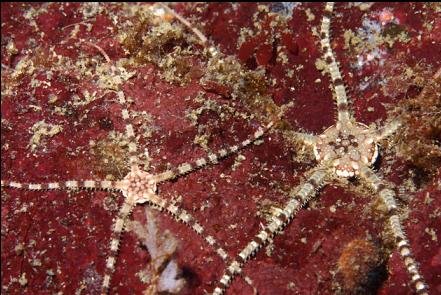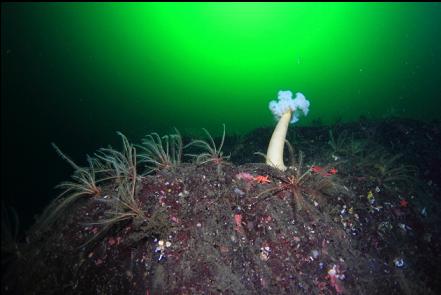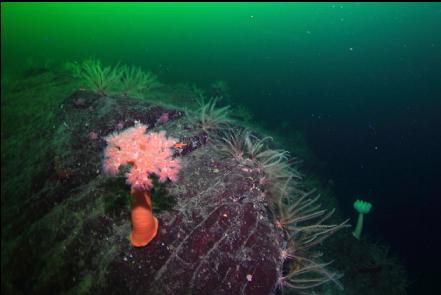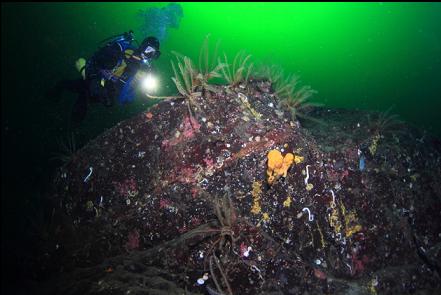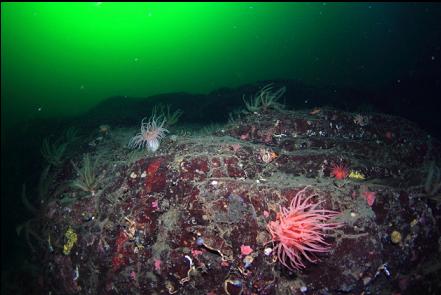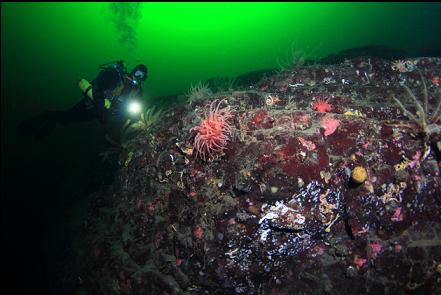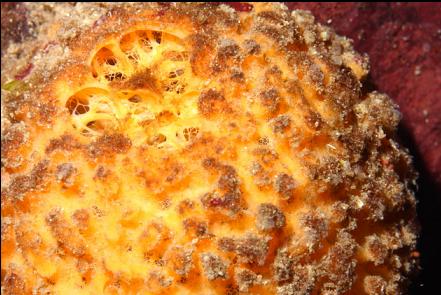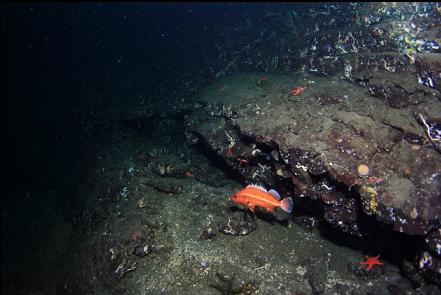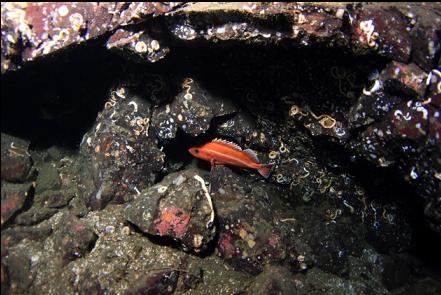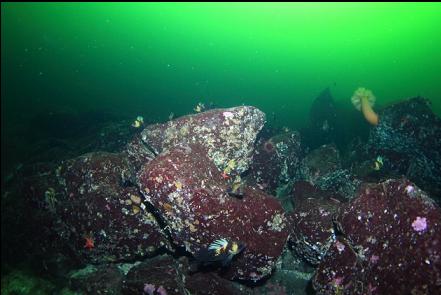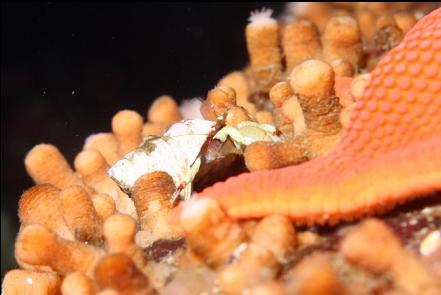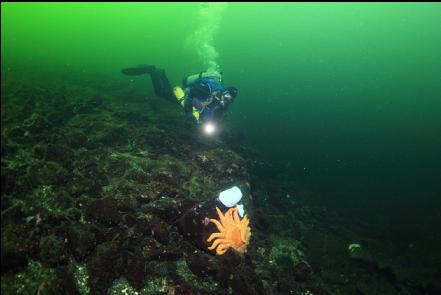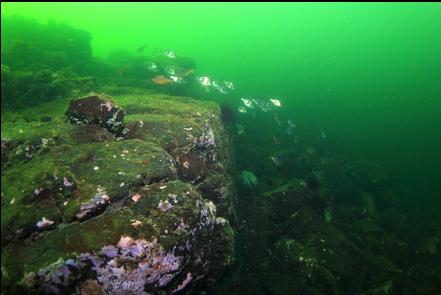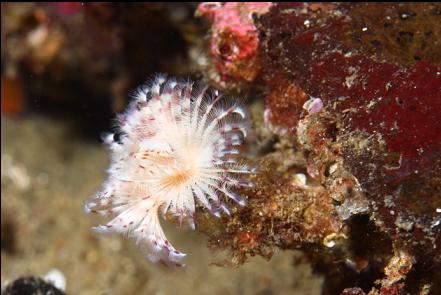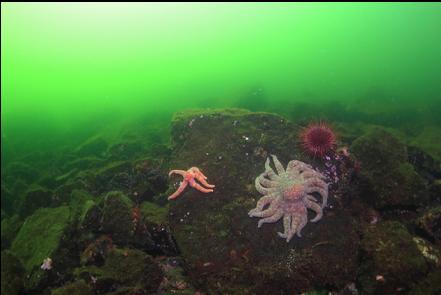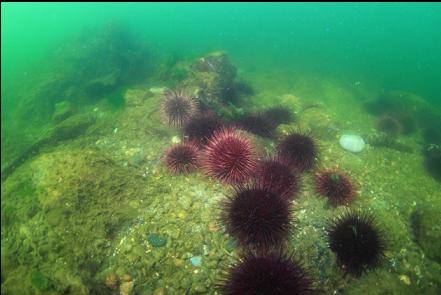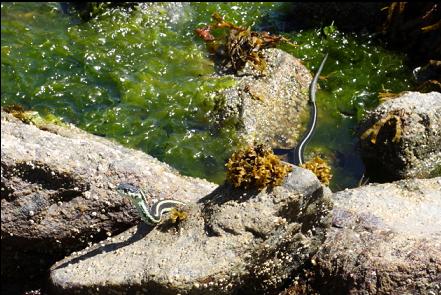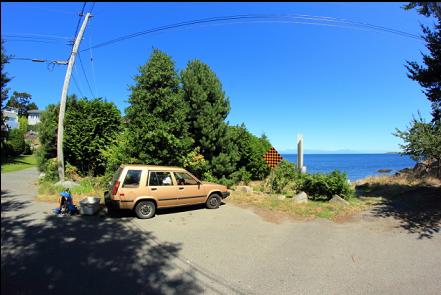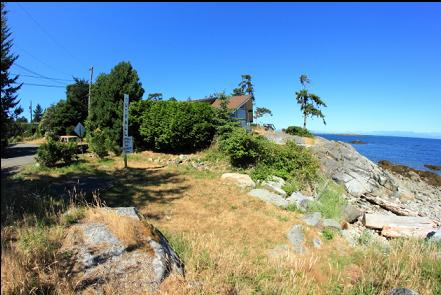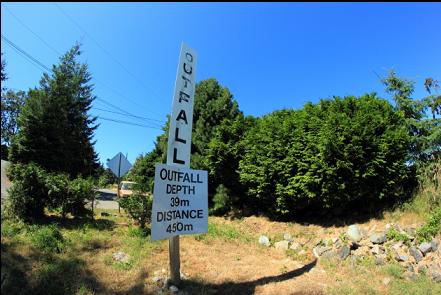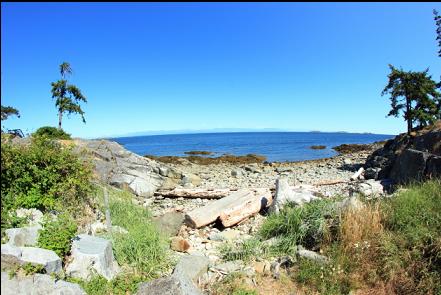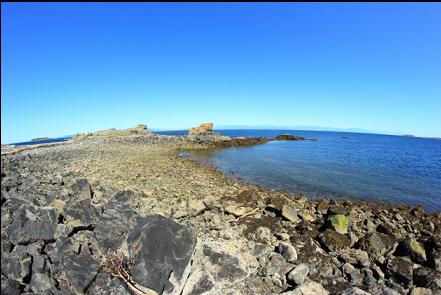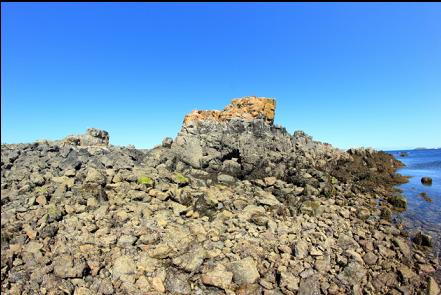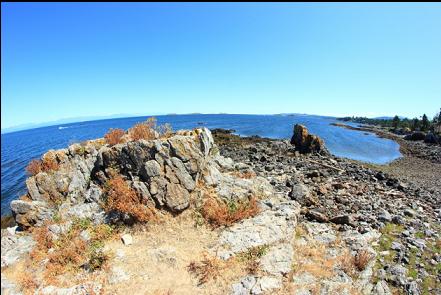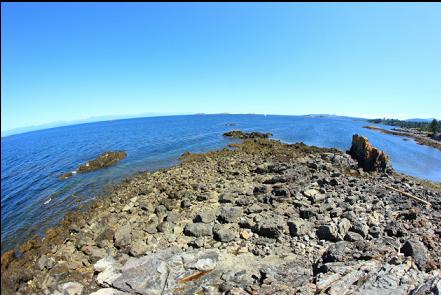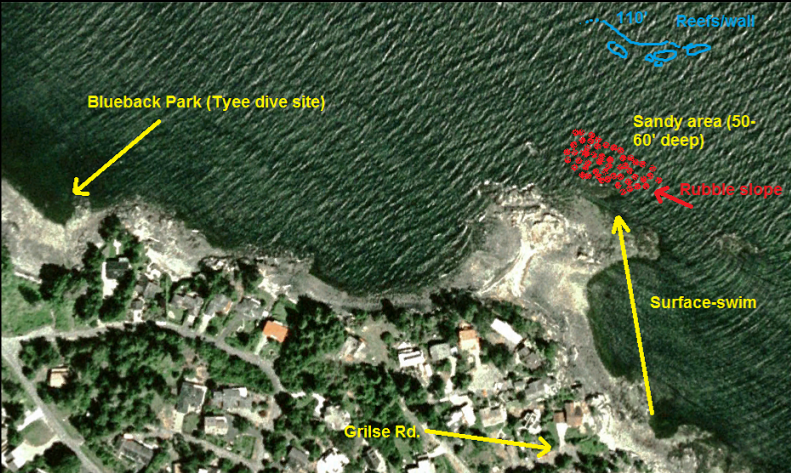I've only dove here once before (years ago from a boat). I always intended to have another look and I knew that there was shore access, but the surface swim to get out past the point and the exposed-to-the-wind location always made me go somewhere else. I showed up here, determined to do a dive on Aug. 5, 2012. The surface-swim isn't really that bad (about 150 meters), but just getting into the water can be tricky. The beach (at the end of Grilse Road) is covered with slippery boulders that slope down very gently. I had to stumble/crawl out for awhile before the water was deep enough for me to float. It would probably be easier at high tide. Once I made it to the point I descended and swam down the rubble slope. Visibility was less than 10 feet in the shallows and the slope was covered with bottom kelp. Below 30 feet, the visibility started to clear. The kelp thinned away and I could see lots of urchins scattered around. The rubble slope ended at about 50 feet deep and then there was a plain of sand. I followed this straight out for awhile and then several large, rounded reefs popped up about 60 feet deep. By now, visibility was 50-80 feet. These reefs seemed pretty bare at first, but as I followed them deeper there were lots of feather stars and some boot sponges, crimson anemones and small, yellow cloud sponges. The backside of these reefs seemed to go down to about 115 feet deep. Part of the reef formed a straight-down wall. I saw a yelloweye rockfish at the bottom. Back around the shallower side of the reefs (60 feet deep) there was a pile of boulders with lots of rockfish (copper, quillback and a tiger) around it. When I returned to shore, the current was pretty strong near the surface at the point. I even saw a sea serpent: A garter snake was hunting in the tide pools. I'll have to do this dive again. I'll come back on a day with little wind at high tide. The deeper reefs here are about 400 meters from the Blueback Park (Tyee) dive site. I'm pretty sure that if I swam out to the right at Tyee, the series of reefs and sandy areas would eventually lead me to the deeper reefs at Nankeville Point. I'd need more air than I usually carry though.
